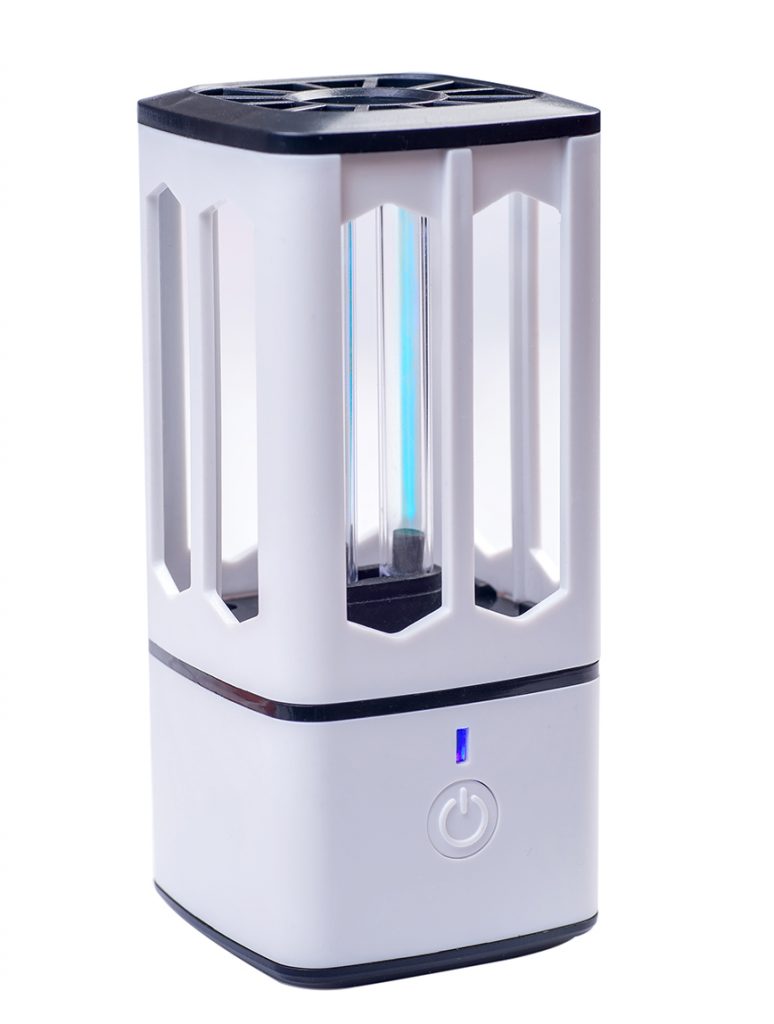Humans have been known to use sunlight or UV rays to kill germs for centuries. This cultural heritage has been passed on to modern times. Scientists have expanded the use of high-energy UVC to public health applications i.e. successfully eliminate the bacteria that caused heavy outbreaks of SARS and MERS in the past.
“Most recently, during the COVID-19 pandemic, the “New Normal” lifestyle which requires close attention to personal hygiene and sanitation to avoid infectious diseases has made UVC increasingly important. Portable UVC devices are now available for consumers to buy in order to kill germs in the air, water, food, money, coins, banknotes, masks, etc.”, said Dr. Thitithip Tippayamontri, Department of Radiological Technology and Medical Physics, Faculty of Allied Health Sciences, Chulalongkorn University in cautioning the public about the use of UVC.

Dr. Thitithip Tippayamontri,
Department of Radiological Technology and Medical Physics,
Faculty of Allied Health Sciences, Chulalongkorn University
UVC in today’s lifestyle
UVC devices have been used in hospitals and industries to disinfect food and ventilation systems. Lately, the devices have started to be used in everyday life, the use of which may sometimes be taken for granted, e.g. to sterilize cutleries in cafeterias or banknotes. As the COVID-19 pandemic is still looming, sterilization devices have become hot items on everybody’s list. As a result, an increasing number of UVC devices are being produced and scaled down to fit domestic use so that people can own them, such as a UVC sterilizer box that can be used in households with toddlers, ailing people, people with allergies, or those who need extra clean surroundings. There are also portable UVC LED sterilizing wands that people can carry around with them to kill airborne germs, germs in food, banknotes, and other items.

Where does UVC come from?
There are several types of both visible and invisible UV rays of various shades and intensity. UVA with a wavelength between 315-400 nanometers covers most areas of the atmosphere. UVB has a wavelength between 280-315 nanometers, while UVC with the shortest wavelength between 100-280 nanometers gives out the most energy and can powerfully annihilate particles and kill 99.99% of germs. UVC cannot penetrate through the atmosphere and get absorbed by the ozone layer.
Therefore, the UV rays that we use for sterilization are synthesized by using the familiar blue, UV light bulbs.

The effectiveness of UVC devices
Through the Ultraviolet Germicidal Irradiation (UVGI) process, the blue UV light shines the UVC rays on objects suspected to have germs. The energy of the rays will penetrate through to the germs’ DNA and RNA, destroy them, stop them from multiplying and die eventually.
The Benefits of UVC devices compared to other means of sterilization
The benefits of irradiation are that it does not take long, can be used as often as desired, is inexpensive, easy to use, and will not ruin the objects’ surface, or leave any residuals making this method better than using alcohol, or disinfectant. Moreover, using it on face masks will not destroy the masks’ fiber which makes it ideal for sanitizing things needed to be reused.

Cautions about the use of irradiation devices
Since this type of irradiation device releases such highly destructive energy, its usage requires extreme caution not to let the radiation touch the skin because of the danger it poses that can cause cancer. Also, do not stare at the rays because it is harmful to the eyes, and can cause cataracts. Using UVGI devices requires proper protection against radiation exposure.
Portable UVGI devices are not recommended at this time because they need to be kept under proper cover to prevent adverse effects. There may be better designs for portability in the future.
Where should UVGI devices be Installed?
The areas suitable for UVGI devices are public areas that house large crowds for a long duration such as hospitals, classrooms, cinemas, auditoriums, sky trains, public restrooms, offices, pantries, or cafeterias. UVC lights can be installed in the HVAC system, for instance.
How to choose appropriate and safe UVGI devices
UVGI releases the radiation like in the oven, so if it is to be used in a room, dimensions should be considered to calculate the right wattage. The room should have ample space and with no blind spots from corners or obstructing objects to ensure effective irradiation. Moreover, make sure to choose the brands that have passed trustworthy product standards, e.g. CE, RoHS to ensure that they can kill 99.9% of the germs.

